Malaysia: Jungle Trekking in Borneo at Bako National Park
National Parks in Sarawak, Malaysian Borneo
There are four main national parks located in the Kuching area. Each offers a distinct nature experience in the South West Sarawak region of Borneo.
The Gunung Gading Park is located west of the city and its main attraction is the sightings of the giant Rafflesia flower, the largest species of flower in the world. These one metre diameter blooms flower for only five days and local tour companies or the local tourist office will know when they are at their best. Sadly when we were here they were not, so we passed on this trip. This park is particularly popular with locals as its easy to reach by car or taxi.
Kubah National Park and Matang Wildlife Centre are the place to go if rainforest scenery is your thing, as the wildlife resides deep in the park away from the main marked trails and the summit trek to Gunung Serapi. Matang is situated within the park and offers a chance to see Orangutan and other wildlife.
The Kuching Wetlands consists of mangrove systems and waterways along the Sarawak coast. Unlike the other parks this one is accessed by boat via a river cruise.
For us the lure of Bako National Park was irresistible. We had the chance of jungle treks to secluded beaches, the chance of spotting proboscis and silver leaf monkeys, cheeky long tailed macaques, snakes, tarantulas and other small jungle wildlife as well as a variety of terrains from swamp forests, scrub vegetation to mangrove and dipterocarp forests.
For more details about each of the parks visit the Sarawak Forestry website.
How to get to Bako National Park?
Like the trip to the Semenggoh Nature Reserve, Kuching local transport and the local boatman make this a pleasant, easy and affordable trip for anyone visiting Sarawak.
The number 1 bus operated by Rapid Kuching Transport leaves every hour from bus station number 1 or (more conveniently for us) at a stop on the North of town opposite the Riverside Majestic Hotel.
The hour long journey to Kampung Bako will cost you a mere RM3.50 ($1.10) where you will be dropped at the boat jetty. Here you pay your National Park Entrance Fee (RM20) and organise your boat to take you from the village to the National Park Beach or Jetty. Many visitors come to the park, just for the day. However, you’ll be very limited as to what you can see due to the diversity of the habitat, and that the fact that you have to do this by foot, meaning you can’t discover the charms of this place quickly. The boat costs RM47 each way for up to five passengers, so if you can find enough people to share with the cost reduces to RM10 each. The journey takes just 20 minutes and depending on the tide when you arrive, you will either be dropped at the purpose built jetty nestled among the mangrove trees or on the beach shoreline with a short wade to dry land.
The boats you book are numbered and you arrange your return time with the boatman when you book. Don’t worry too much about being committed to this as you can get the helpful staff at the National Park to call and change your collection time as we did.
How to book accommodation in Bako National Park?
You need to book accommodation in advance before arriving at the national parks. The accommodation is limited, so no walk up services are available. This can be done either on line via a web form request or at the Sarawak National Parks Office next door to the tourist information office in the Old Courthouse Building in Kuching. If you are arriving at the weekend, be aware that the booking office is closed on Saturdays and Sundays.
There is a range of accommodation at Bako, but all of it is basic and the only real difference is how many people you will share with or whether you have your own attached bathroom. As you’d expect for a national park, camping is a popular option for some. We booked exclusive use, of a four person dorm room with shared bathroom, for just over RM40 (US $13) for the night for both of us.
There is a canteen on site which has basic food, drinks and even beer for sale all at reasonable prices. The food, like the rooms, is basic and will remind you of school dinners as its self service but it keeps you energised for the treks and is served by the very friendly on site staff.
The best trek route to see the Proboscis Monkey at Bako NP
We arrived at around 1pm, had lunch and after off-loading our bags in our room, it was getting a bit late so we took the advice of the reception staff and headed out for one of the shorter treks for our first day. We chose the Telok Paku trail (at 2.4km for the round trip) which takes you from the park centre to the beach through the cliff forest. The trek is reasonably challenging with some steep sections traversing tree roots and mossy ground. This is one of the best trails for proboscis monkey sightings, and as we later learned we had embarked on the trek at exactly the right time, as they are most active in the early morning or late afternoons.
This, the first of our first jungle treks was quite an eerie experience as you are completely unfamiliar with the sounds and movements in the forest as you make your way slowly over the uneven ground. The first you know about a potential monkey sighting are the grunts and the crashing of the tree canopy metres above your head, which was a little bit unnerving the first time we heard this.
We’ve added some sound cloud audio files to the travel blog to try and give you a sense of the places we visited. Let us know what you think of these sounds from trekking in the Borneo jungle, as its just an experiment and wonder whether it adds anything to the blog? Here are our first attempts.
[soundcloud id=’57717013′ playerType=’Standard’]
[soundcloud id=’57717005′ playerType=’Standard’]
We started to hear these sounds just as we ended the trail and emerged onto the secluded beach where there was a group of macaques scuttling about at the water’s edge. As we looked to the right we saw our first proboscis monkeys high up in the trees chomping on the fruits and leaves. As we learnt, they are extremely shy and at the sight of us they retreated into the canopy.
We had to hone our stealth skills so we spent the next hour or so on the beach, or in the jungle which fringed it, creeping around hiding ourselves till we heard the rustling and then quietly and slowly tried to get some pictures. We finally headed back and continued our stealth manoeuvres trying to spot the monkeys high in the canopy near to the beach. The frustrating thing is, you know the monkeys are well aware of your presence and are in the vicinity, as you can hear the distinctive grunt made by the proboscis monkeys and the noisy way which they clamber around the jungle.
Just as we got back to the main jetty area we found a mother and baby pair high up in the trees who we managed to snap. They must have been about 50 metres away but were still wary of us, with my zoom at full length I managed to get a shot of the mother’s displeasure at our unwanted attention. Great moment, hopefully not too disturbing for mother and child.
We decided to rest at one of the shelters on the beach before heading back to the accommodation block and were rewarded with a half hour of more fantastic nature in the form of bird life and strange looking crabs, one of which was coloured the most vivid blue I have ever seen on a creature, absolutely fascinating. If you visit spend a while here at low tide it is a real pleasure.
We were quite lucky with our sightings, as we spoke with other visitors at the park who had failed to spot a glimpse of these strange looking monkeys.
Trekking in the Borneo Jungle at Night
We knew that there were guided night treks organised by the rangers here. You pay a small fee (RM10) to join the guide and need to bring a torch with you. The guides have good powerful torches for spotting and showing off the night creatures, but you will need your own to be sure of your footings in places.
I was unsure of what to expect or whether this would be worth the trip. Given my tiredness from the afternoon trek in the heat and my post dinner comfort I nearly said to John that we should skip the planned night trek. I am so glad John persuaded me to do it.
It was an incredibly unique experience, thankfully our afternoon trek had got us ready for some of the sounds of the jungle, but at night everything seems amplified and you are greeted with a whole new range of sounds from the creatures that only come out to play when it gets dark. Given the lack of sun and the trek along a flat route (the Ulu Assam trail) the walk is not strenuous, and you take it very slowly while the rangers seek out the hidden animals and reptiles.
It was explained before we set out that what we see is down to luck, but I secretly hoped for a snake or two and at least one tiny tree frog. In the end we got all of these and a whole lot more.
The advertised one and a half hours trek (it was actually just over 2 hrs) was probably one of the strangest experiences of this whole trip so far, but I would do it again in an instant. In fact we both did not want it to end. I have never really used my camera in these total darkness conditions before, but thankfully I discovered it copes quite well and I managed to get some pictures of a sample of the creatures we saw on this trip. We also captured some of the sounds of the night trek to give you a hint of the atmosphere.
[soundcloud id=’57717068′ playerType=’Standard’]
Here is a list of some of the treats we got to see and hear:
- A very noisy tree frog, the sound is deafening at times
- A selection of viper snakes thankfully happy to strike a pose, but not us
- A very shy tarantula spider who refused to pose for photographs and hid in his tree stump
- Flying lemurs who stuck to tree trunks and were not the interested in flying.
- Giant centipedes
- A Scorpion or two way too quick to catch on camera
- Spiders of all sizes
- A nest of swallows making birds nest soup! The birds nests actually come from caves in another part of Sarawak for this popular regionally produced dish.
- Not to mention the night time smells of the jungle, with some of the fauna projecting some intoxicating scents.
- The luminous mushrooms, which are a bizarre and enchanting spectacle lighting up patches of the jungle.
Our final hike at Bako National Park
The next day for our final trek we took on the Lintang loop a 6Km round trip trek that takes you through a variety of the different terrains. We decided to do the loop anticlockwise for no reason other than that is the way we decided to head out.
We set off at 8.30am after having delayed our boat pick up till later in the afternoon and enjoyed the first 500 meters so the flat hearing but struggling to see the Proboscis moneys in the numbers or with the ease we had the day before. However, we soon discovered that our anticlockwise route meant we were doing the next kilometre in an almost upright direction.
Needless to say we were pretty knackered when we reached the first lookout overlooking the sea at an elevation of 800m. Thankfully the rest of the trek was either downhill or only with some gentle gradients.What is fascinating about this trail is the change in terrain as you make your way further from the shore inland.
The trail changes from jungle to hard stony scrub flatlands. Wildlife sightings for us were far and few between, but the changing vegetation and landscape and the carnivorous pitcher plants made up for this.The trip is labelled as a three and half hour round trip, but with a couple of generous stops we managed it in just over three hours.Thankfully this gave us an hour to cool off and change from our sweat drenched clothes before the boat picked us up. I also managed to twist my foot, 5 mins from the end of the trek, which is now swollen and looks like it will prevent me from tackling Kota Kinabalu in Sabah – bugger.
There are many more ambitious treks and walks for those with more time. We have included a copy of the Bako National Park Trek Routes Map in the gallery below.
Travel Tips for visiting Bako National Park
The treks here are not that difficult in terms of gradient and length, but combined with the heat and humidity and uneven terrain (think jungle root systems) this makes them quite a challenge, even for the relatively fit. You will sweat from places, and in greater volume than you ever have before, so make sure you take plenty of water with you. The park are very safety conscious and you must sign in and out for all your treks letting the staff know where you are going should anything not go to plan.
All in, another great value self managed trip which with boat fees, bus fares, park entry fees and accommodation cost us RM90 each (US $28) for an overnight stay and a visit to the jungle – you really can’t buy those sort of experiences at that price anywhere but here.
- It is essential to pre-book accommodation. You can only do this Monday-Friday.
- Take a fashion tip from tennis legend Bjorn Borg, and take a sweatband for your head, you’ll grow tired of mopping your brow to keep the salt trickling into your eyes.
- There a trip hazards a plenty on all the treks, mainly tree stumps and roots, so if you can take a walking pole or stick – do so!
- Take a torch to explore the jungle by night.
- Stay at least one or two nights here, rather than just visit for the day. You couldn’t possibly begin to explore what the place has to offer without camping or staying in a lodge.
- Don’t leave food, water or belongings unattended for a millisecond absolutely anywhere in the park. Even if you can’t see a cheeky macaque, there will be one hiding in wait for the split-second opportunity to steal your bag, camera or water bottle. Their favourite hangout is the cafeteria roof, you won’t stand a chance as they’re a lot quicker and more conniving than you think.
We enjoyed ourselves so much that we were considering extending our stay, before I injured my foot, for another night. This place makes you feel so alive, by making you feel your’e about to die (due to the exhausting humidity rather than any threatening creatures) and it was a great pleasure to trek amongst the trees and beaches observing the abundance of nature in this very special destination called Borneo.

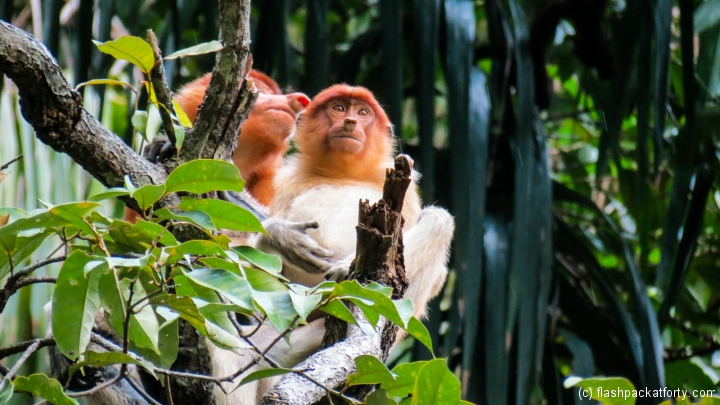
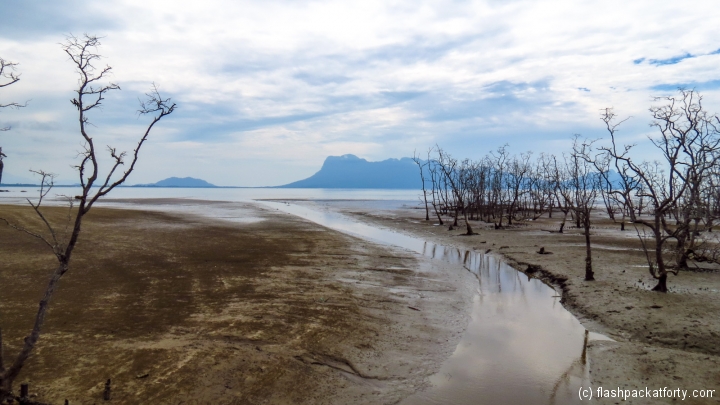
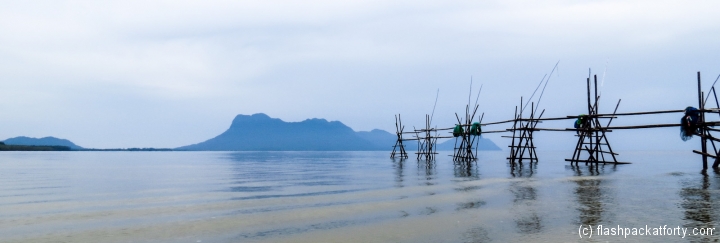

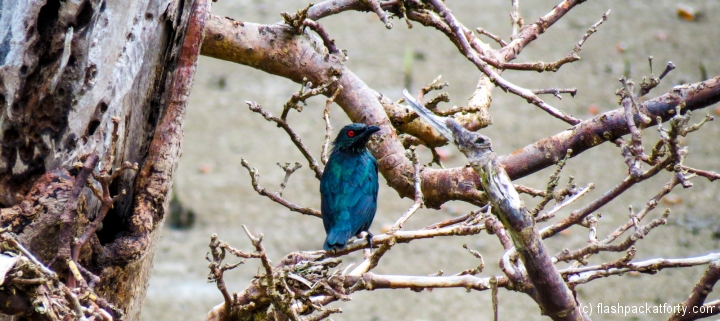
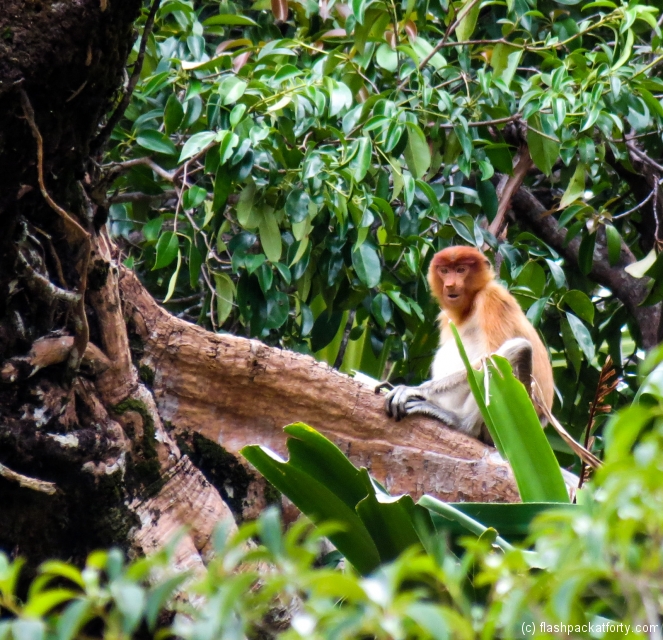
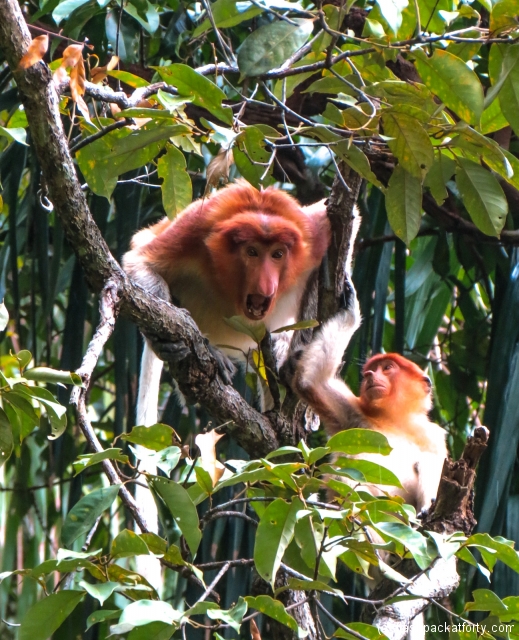
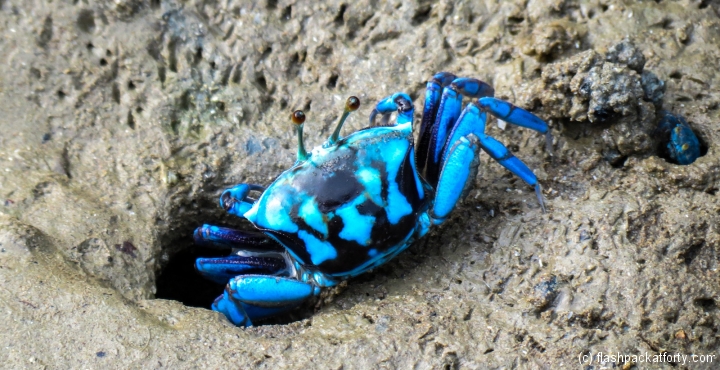

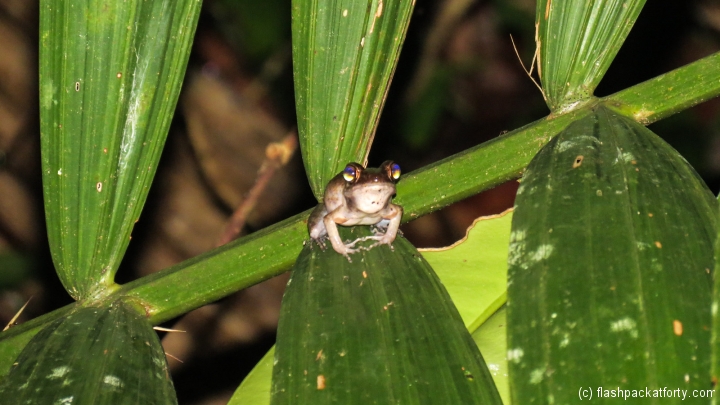
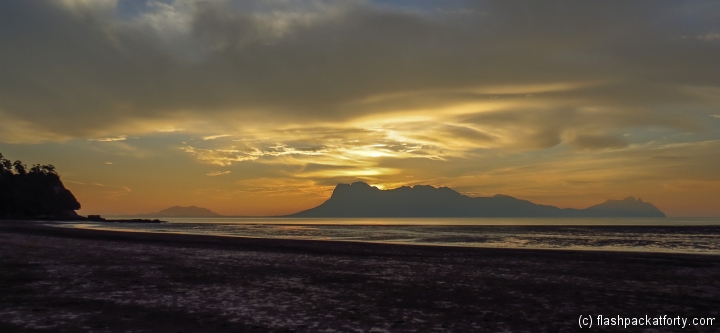

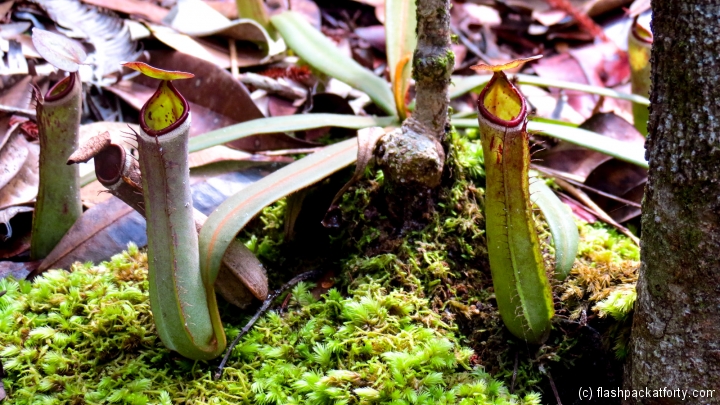
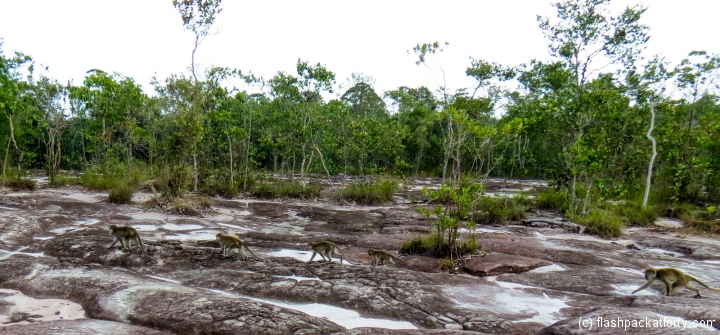
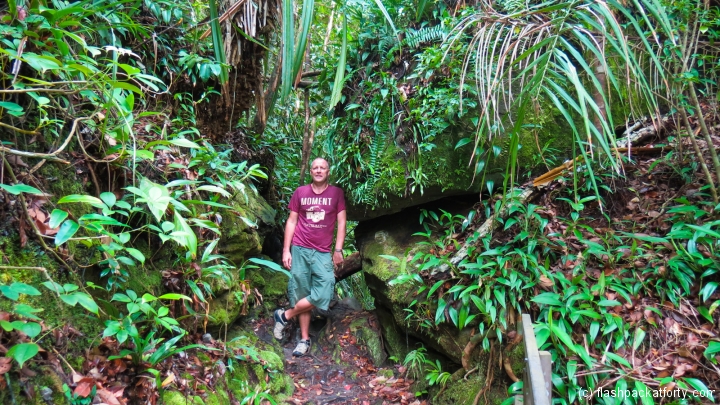

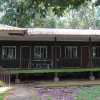
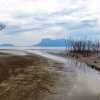
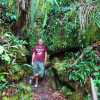
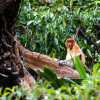

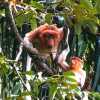
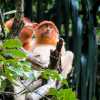
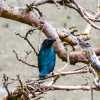
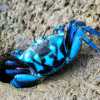
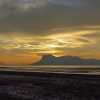



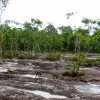
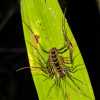
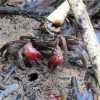
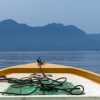
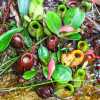

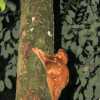
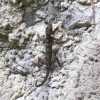


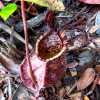
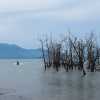
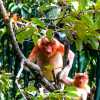

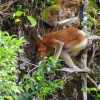

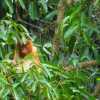
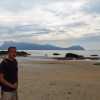
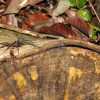
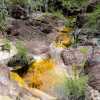

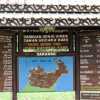

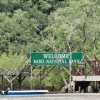
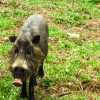







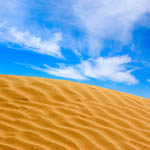
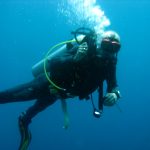

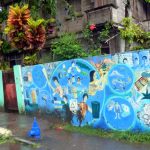
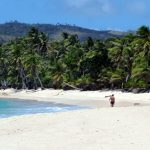
Great photos as usual, love the detail.
You are my greatest photo fan, I may hire you to do my promotion 🙂
Fantastic photos like the audio
Cheers Karen, we hoped the sound might give people and idea of the atmosphere.
Hi John and Craig,
I loved this entry from Borneo. The sound effects worked brilliantly, I particularly loved the second one I may well meditate to that as I’m sure it will increase alpha-waves. The photos were superb, loved the protective mummy monkey one and the amazing blue crab, keep trekking you two xxx
The Crab was about the size of a ping pong ball, but that picture makes him look much bigger, but the colour was just fantastic. There were thousands of different crabs all scrabbling about the beach at low tide. Mesmerising to watch.